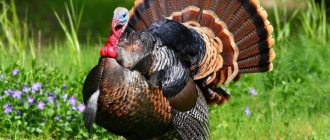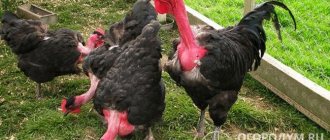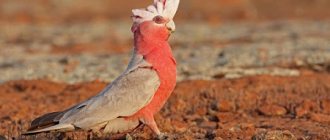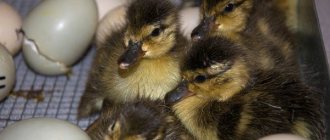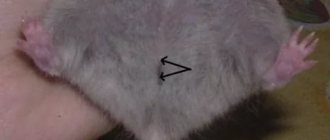The Madagascar cockroach is a hissing pest that does not have wings. The Madagascar cockroach is a hissing pest that does not have wings. It has a brown abdomen, the pronotum is brown-black in color.
Hissing insects are named because in times of danger they scare away enemies with a sound that resembles a hiss.
Description of the insect
The Madagascar cockroach of different sexes looks different. Thus, in males there are cone-shaped growths on the sides of the middle part of the pronotum. They resemble horns. Females, on the contrary, have a smooth pronotum. They don't have horns.
The larvae can be colored differently. Until the last stage, their color is yellowish-brown. The pronotum is black-brown in color.
Madagascar cockroach larvae can be colored differently
Eating exotic insects
There is a delicacy in Thai cuisine - fried Madagascar cockroaches. The meat resembles ham. It contains a lot of protein and is completely free of fat. Healthy dietary dish. Preparation of the delicacy begins with the removal of the cephalothorax and wings. The remaining part is placed in a hot frying pan with the addition of vegetable oil. If you feel sorry for eating pets, but want to try the delicacy, you can peel and fry king prawns. The taste and appearance are identical. You can eat Madagascar cockroaches with fresh vegetables.
Habitat
The Madagascar hissing cockroach is considered one of the largest cockroaches. The average size of the parasite is 55-60 millimeters. Males are smaller than females. In some cases, insects grow up to 10 centimeters.
In nature, insects live in Madagascar on the branches of bushes and tree trunks. The greatest activity of parasites is observed during twilight hours.
The cockroach is a tropical insect, so it is accustomed to living in high temperatures and humidity.
If you decide to start it at home, you will have to maintain the temperature at 27 degrees. At temperatures below 20 degrees, cockroaches will feel unwell and stop reproducing.
The Madagascar hissing cockroach is considered one of the largest cockroaches
Air humidity should reach approximately 65%. But maintaining it at home is extremely difficult. Just spray the cage with water, but not too much or often. Spraying should be done from a spray bottle; it is better to use hot water. It creates a mist, which is great for the cockroach.
If desired, you can make a special humidifying device. Just place a couple of jars filled with water in the insectarium. But make sure that insects do not get into the water.
Biological features of tropical insects
Cockroaches of this type inhabit Madagascar and are no longer found in the wild. They get to other countries thanks to exotics, or through transportation, when an arthropod climbs into a container with food.
These insects do not represent a species, but an entire genus. There are more than 20 varieties. They differ in structure, behavior, external outline, and size.
Madagascar individuals, unlike other types, including Cuban cockroaches, have the following features:
Appearance
Madagascar hissing cockroaches do not have wings. This is the main feature from other species of the cockroach family. The remaining species are distinguished by their ability to fly well.
Individuals living in Madagascar have a dense and hard chitinous cover, which is not found in other species. Thanks to it, the insect is protected from the mechanical influences of external forces. They are large in size, adult beetles grow 9 cm in length.
What do Madagascar cockroaches look like in color? Range from light red to intense black color. Often color allows you to determine the age of an arthropod; the lighter the color, the older it is.
Males and females differ in appearance. A boy can be easily distinguished from a girl by the color of the chitinous covering. The male Madagascar cockroach has bright colors that attract the opposite sex, and they also have outgrowths at the beginning of the shell, which serve as a kind of decoration. The mustache helps to recognize the female. In boys they are broken, due to the fact that there is a struggle for the attention of the female with another competitor. Also, the female and male differ in the size of the abdomen. In females it is wider; they reproduce and bear larvae inside it.
Look at these exotic aquarium inhabitants.
Lifestyle
Arthropods are timid, hide in the daylight, crawl out of secluded places at sunset, lead an active lifestyle, and get food. The question arises of what these insects can do. Due to the fact that they are food for many animals, beetles are excellent at camouflaging themselves and sensing danger in a matter of time. In addition, they sit motionless in the shelter. If a predator notices prey, the insect presses harder to the ground so that the hunter cannot grab it. If caught, it hisses loudly, which is how it got its name. When cockroaches hiss, they scare away other animals, since the sounds they make are similar to a snake, they scare away hunters, since they are characterized by their small size, and often become prey for reptiles themselves.
Appearance of sounds
Hissing appears from spiracles located on the surface of the body. The individual sharply contracts its lungs, air is expelled from them, and it produces frightening sounds.
Males hiss not only during a defensive reaction, but also to attract a female. Competitors collide with each other with antennae, everything is accompanied by sounds. The arthropod, exhausted, turns over on its back and admits defeat.
How long do Madagascar cockroaches live?
How long the average Madagascar cockroach lives depends on the living conditions. In the wild, life expectancy is 1-1.5 years. In artificially created conditions, the duration of the life period increases, maybe up to 5 years. The main thing is to create proper nutrition and comfortable conditions.
Home maintenance
The reproduction and habitat of Madagascar cockroaches can occur at home. Breeding insects is very simple, even in the Russian Federation. The insectarium serves as the habitat of the house. Cockroaches do not smell, they are easy to keep and feed, and they take up little space. There is no need to walk an exotic insect either. In some cases, cockroaches are bred as food for lizards or tarantulas.
Reproduction and habitat of Madagascar cockroaches can occur at home
The terrarium must be equipped with:
- stone;
- snag;
- Each cockroach should have 1 liter of container volume.
For a couple of insects, you can take a small two-liter container. And for a family of 30, you will need a real aquarium of 30 liters.
Origin of the species and description
Photo: Madagascar cockroach
Madagascar cockroaches are an endemic species found only on the island of Madagascar. Close relatives of hissing cockroaches in Madagascar include mantids, grasshoppers, stick insects and termites.
Fun fact: Madagascar cockroaches are known as "living fossils" because these insects are very similar to prehistoric cockroaches that lived on Earth long before dinosaurs.
Madagascar cockroaches are docile, easy to care for, and are often kept as pets. They require a small room with a place where they can hide because they prefer to stay away from light. Due to their tendency to climb, the living area should be checked to see if they can climb out of the enclosure.
Video: Madagascar cockroach
Aquariums or terrariums found in pet stores work well, but it is wise to cover the top few inches of glass with Vaseline in order to prevent them from leaving their habitat. They can live on fresh vegetables along with any type of high protein pellet, such as dry dog food. Water can be provided by keeping a damp sponge in its natural environment.
Fun fact: In some places, people eat hissing cockroaches because they are rich in protein and easily available. Eating insects is called entomophagy.
Nutritional Features
The Madagascar hissing cockroach prefers herbaceous parts of plants and fruits. They are not averse to eating fallen leaves.
Cockroaches eat not only plants, but also fruits. At home you can feed them carrots and bananas. It is worth noting that each barbel has its own taste preferences. So, some individuals are not averse to eating popcorn or apples. You can also give your pets:
- boiled eggs;
- vegetables;
- cereal
Danger to humans
Madagascar cockroaches do not bite, but they can bite in self-defense or protection of offspring. Before attacking, the insect warns of the attack with a threatening hiss or whistle. If this happens, the wound should be immediately disinfected and treated with any ointment to speed up the healing of the skin.
If you keep your pets in decent conditions, clean the terrarium in a timely manner, and prevent mold and rot, they will not spread the infection throughout the apartment. When kept in a closed terrarium, they are released into the room only with the help of the owner.
Molting of the Madagascar cockroach (video)
In some cases, insects are fed:
- salad;
- dandelion;
- celery;
- cabbage
You can give the cockroaches cat food, cookies, and corn sticks. The main thing is that the products are dry. In order for the insect's shell to be normal, the pet should be fed foods containing calcium.
It is important that the cockroach has access to moisture. If there is no fresh fruit and water, he dies. However, you cannot install a regular drinking bowl for rodents. Cockroaches can simply drown in a bowl. The ideal option is a piece of foam rubber moistened with water. Insects will drink while crawling on it. The foam will have to be wetted periodically.
Requirements for keeping in captivity
You need to know what to feed insects. The source of life is water, which cockroaches get from fruits. Breeding in captivity presupposes the need to provide a safe watering area where pets cannot drown. It is necessary to include fruits in your diet. In addition, the cockroach should receive cereals (buckwheat, oatmeal) and dry fish food. You need to give the insects leaves of cabbage, lettuce, dandelions, and also boiled eggs.
If you plan to keep Madagascar cockroaches, their maintenance requires a careful approach:
- The humidity level is within 65%, for which the insects’ home is periodically sprayed with water and containers with liquid are installed;
- The air temperature should not go beyond +18...+30 degrees;
- Ventilation holes are made in the aquarium with a lid.
The main thing is that food is constantly in their cage and is varied, otherwise insects may exhibit cannibalism
Reproduction of cockroaches
How long do Madagascar cockroaches live? The average life expectancy is one and a half years. When kept at home, the insect can live for about 3 years; some cockroaches live up to 5 years of age.
If there is no fresh fruit and water, the Madagascar cockroach will die
The reproduction of this type of insect has its own characteristics. They are viviparous. The female carries the edema in a special pouch until the eggs hatch into larvae.
As a rule, one female produces about 30 small cockroaches. Larval development is slow. The parasite matures after six months. Adults and larvae coexist perfectly with each other.
Although there is no cannibalism between a cockroach and a nymph, if there is a calcium deficiency, the individuals may feed on each other's shells. As a result, approximately 10% of new individuals die. So, if 40 nymphs appear, about 35 cockroaches will grow to adulthood.
After the final molt, the insect lives for about a year. The appearance does not change during this time, except that males may lose their mustache during fights. By this characteristic, you can recognize old parasites and young ones. In older people, the musculoskeletal muscles are broken much more often. Females don't fight.
After you have given birth to cockroaches, you should follow these rules:
- Lubricate the edges of the aquarium with Vaseline to prevent young fish from getting out;
- Do not place a deep water bowl in the cage.
The female carries the edema in a special pouch until the eggs hatch into larvae.
Insects do not need other devices. Young and adult individuals get along well together. Nymphs may still have skin after molting, but insects eat it due to its high nutrient content.
We also invite you to learn about the types of snails intended for keeping at home.
Social structure and reproduction
Photo: Baby Madagascar cockroaches
The Madagascar cockroach even begins its life in an unusual way. The life cycle of the hissing Madagascar cockroach is long and different from most other cockroaches. Females are oviparous, with the female carrying the eggs and raising the newborn larvae inside her body for approximately 60 days until they become first-order larvae.
One female can produce up to 30-60 larvae. This insect has an incomplete life cycle: egg, larva and adult stage. The larvae undergo 6 moults before reaching maturity after 7 months. Larvae and wingless adults can live from 2 to 5 years.
There are striking differences between the sexes. Males have large horns behind their heads, while females have small “bumps.” The presence of anterior horns makes it easy to recognize the sex. Males have hairy antennae, while females have smoother ones. The behavior of men and women also differs: only men are aggressive.
Madagascar cockroaches molt (shed their outer skin) six times before they reach maturity. This is the period when the cockroach is most vulnerable. He may not eat for a whole day before molting as he prepares his body for the process. When it reaches 7 months, it stops molting and reaches maturity.
Lifestyle of Madagascar cockroaches (video)
Madagascar cockroaches are large, hissing insects without wings. Males and females look different. Females are larger, and males have horns. In nature, parasites live in Madagascar, but they can also be kept at home. However, they will have to maintain a certain temperature and humidity. Cockroaches are viviparous. Life expectancy is about 2 years. Insects feed on plants and fruits. At home you can feed them with cereals. Insects are often bred for decorative purposes or as animal feed. There is no harm to humans from them.
Breeding cockroaches at home
Madagascar cockroach: breeding.
Madagascar cockroaches are mainly raised as food for lizards and snakes. But some exotic lovers breed hissing cockroaches as pets. They live and reproduce in a warm and humid container with an air temperature of +25-+28 degrees and humidity not higher than 70 percent.
The lid must have holes for ventilation. You can add sawdust or coconut shavings to the bottom. In order for cockroaches to hide during the daytime, you need to equip shelters. You can buy them at the store or make them yourself from what you have at home. Place a drinking bowl at the bottom and put pieces of cotton wool in it to prevent the cockroaches from drowning.
Several rules require special adherence:
- The container must be closed. Although they cannot fly, they actively crawl.
- A transparent lid and walls are perfect - it's fun to watch the animals.
- Cockroaches do not like anything unnecessary, foreign objects can irritate them, and they show aggression.
- Bark or driftwood is required to shelter the animal.
- Make sure there is always water and enough food in the drinking bowl.
- Change the litter once a month.
- Maintain the temperature in the container, otherwise the cockroaches will grow and develop poorly.
Reviews and comments
+1 Dmitry 02/21/2017 11:27 I got myself a dozen of these cockroaches, I keep them at work as a joke, my colleagues are used to them. I got them small, 5 mm each, now they have grown to 3 cm. I built them for them from a plastic tray, bamboo sticks and matchboxes this is the design.
got them small, 5 mm each, now they have grown to 3 cm. I built them for them from a plastic tray, bamboo sticks and matchboxes this is the design.
I feed him what I eat for lunch. Thanks for the article, I found a lot of interesting things for myself. The only thing: you write “The Madagascar cockroach is a hissing pest” and at the same time “at the same time, there is no harm from the barbels. They do not pose a threat to humans." So is he a pest or not? Quote
Price for one cockroach
In big cities it is not difficult to buy a Madagascar cockroach. It can be purchased at a poultry market or pet store. You can even order a cockroach on the Internet. The insect can travel in a package for up to 4 days. The price of an exotic pet is from 100 rubles. Adults can cost up to 500 rubles.
Madagascar cockroaches live longer in captivity than in natural conditions. They do not harm humans and are bred for different purposes. Madagascar insects participate in cockroach races, become food for other pets, or turn into high-calorie exotic dishes. They are easy to maintain. It is enough to provide them with the necessary humidity and air temperature, a dark place to hide, diversify the menu and provide access to water. Cockroach repellents also work well on the Madagascar subspecies.
Hissing sound
Hissing cockroaches have a pair of modified spiracles; These are tubes that insects use to breathe. These insects use these spiracles to produce the hissing sound that inspired their name. They hiss when disturbed, and males also hiss when courting females. Sometimes an entire colony hisses in unison, for reasons that are not yet clear to researchers.
The sibilants force the air through their spiracles to produce all their various hissing sounds; one call is used to attract a mate, another is used when the cockroach feels threatened (known as an "alarm" hiss), and the third known hiss is a warning, used when a male cockroach is preparing to attack another male.
Adult male cockroaches can be identified by two large, prominent tubercles (tubercles) on the dorsal plate (prothorax) behind the head. Adult females also have tubercles in the same location, but they are smooth.
Appearance
While a good half of the representatives of the cockroach order are distinguished by the presence of developed wings, Madagascan individuals are completely devoid of them. The appearance of the insect can be called at least unusual. A distinctive feature of the cockroach is its impressive size, hard chitinous cover and large striped abdomen . Adult insects can reach a length of almost 10 centimeters.
The color may vary depending on the subspecies and condition of the insect. As a rule, it is a light red shade with isolated black areas. The younger the individual, the darker the color of its shell. Individuals of different sexes are distinguished by the presence of a “visor” in the male on the chitinous cover in its upper part.
In most males, the whiskers are damaged or absent altogether. This is explained by periodic skirmishes with their brothers in the fight for the female they like. While the latter can always boast of a intact, even and lush mustache. Another distinctive feature of females is their wide and slightly protruding abdomen.
Why do people keep large insects at home?
There are two types of owners of the Madagascar cockroach, the first one keeps it as a pet, the second one keeps it as food for its pet. They often become food for spiders and lizards, parrots and crows; it is quite expensive to buy such food for your pets; it is much cheaper to breed it yourself at home.
Regarding those who keep them as pets, there is nothing strange or scary about this. Many can condemn, twist at their temples and say how crazy this idea is, and here you can argue with such people endlessly.
- The first argument in favor is that it is an exotic pet; after all, they have spiders, lizards, and snakes, then why are cockroaches so scary? They are much safer and nicer.
- The second is easy care. Not everyone can afford to walk their dog at least 2 times a day. Many people go on business trips, and then there can be no talk about pets at all, but that’s what they want.
- The third is love for animals. Where is it written that you can only love fluffy and cute animals? If a person is ready to create ideal living conditions and share his love and care, then why condemn it.
Black cockroach (Blatta orientalis L)
A type of pest that lives in our region, the black cockroach is found in apartments much less frequently than the Prussian cockroach; in the summer they live in basements, landfills and abandoned places. The black cockroach reproduces more slowly, so red pests have practically squeezed this species out of apartments and houses, and besides, red cockroaches eat the larvae laid by female black cockroaches. This species is popularly called the oriental cockroach.
They feed on any food that comes under their paws; the chitinous shell has a dark color from black to dark brown. Black cockroaches secrete an enzyme that creates an unpleasant odor in the room.
The black cockroach is a distributor of many diseases; thanks to its lifestyle, which consists of searching for food in sewers, landfills and basements, they are much more likely to carry infection than red cockroaches. If you notice black cockroaches in your kitchen, you should immediately purchase cockroach repellent.
Furniture cockroach
Furniture cockroaches were discovered in Russia about 100 years ago. From the name it is clear that these insects like to hide in furniture. These cockroaches can often be found in city libraries, furniture workshops and bedrooms.
A characteristic feature of these cockroaches is their light color, as can be seen in the photo below.
American cockroach
Its homeland is Africa, but it was brought to America and it has taken root remarkably well in human homes, where the optimum air temperature is constantly maintained and food is abundant.
The size of the insect does not exceed 3 cm and the reproduction rate is inferior to the Prussians familiar to us. The American cockroach was able to move to Europe and even took root in many countries with a relatively warm climate.
Breeding
After fertilization, the female raises the offspring inside the abdomen according to the principle of an ootheca (capsule with protein material). Sometimes she takes it off to check the balls. Unlike other representatives of cockroaches, which shed their ootheca long before the young emerge, Madagascan females carry it with it until the very end.
The larvae begin to appear directly in the abdomen of the insect and crawl out of it onto the back of the female, right along with the protein mass where they developed. At first, the nymphs feed on the ooteca, and their chitinous cover quickly darkens. The young are in no hurry to leave their mother’s back, and she doesn’t even try to drive them away.
When the offspring crawl to the ground, the female does not leave them a single step. With a barely audible hiss, she collects young animals near her, and with sharp sounds she scares away potential predators.
The female Madagascar cockroach bears up to 25 larvae at a time. Until the young animals reach the age of puberty, they can shed 5-6 times, getting rid of the old shell and at the same time changing the color saturation of the new chitinous shell.
As the insect grows, only its body increases. The chitinous cover remains the same and does not change in size. “Adjustment” of the shell occurs with each new molt. It is worth noting that cockroaches are not averse to feasting on the remnants of the shed cover. The quantity and quality of molting depends mainly on the habitat and temperature conditions: an insect can shed its shell either after 6 months or after a year.
Vietnamese cockroach (Shelfordella tartara)
This species lives in the southern regions of Russia and is known under the names “Turkestan cockroach” and “Central Asian cockroach”. This cockroach is quite rare and lives mainly on the street. Adults reach 2.5 cm and are able to jump far, assisted by their wings. The cockroach has a dark abdomen and a yellow cephalothorax, which is clearly visible in the photo.

